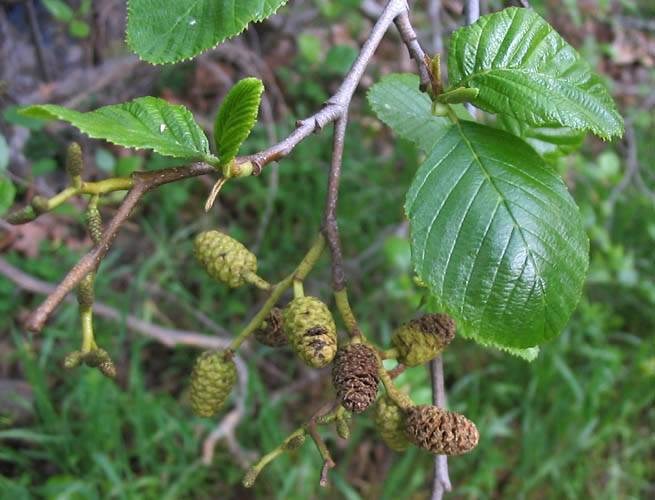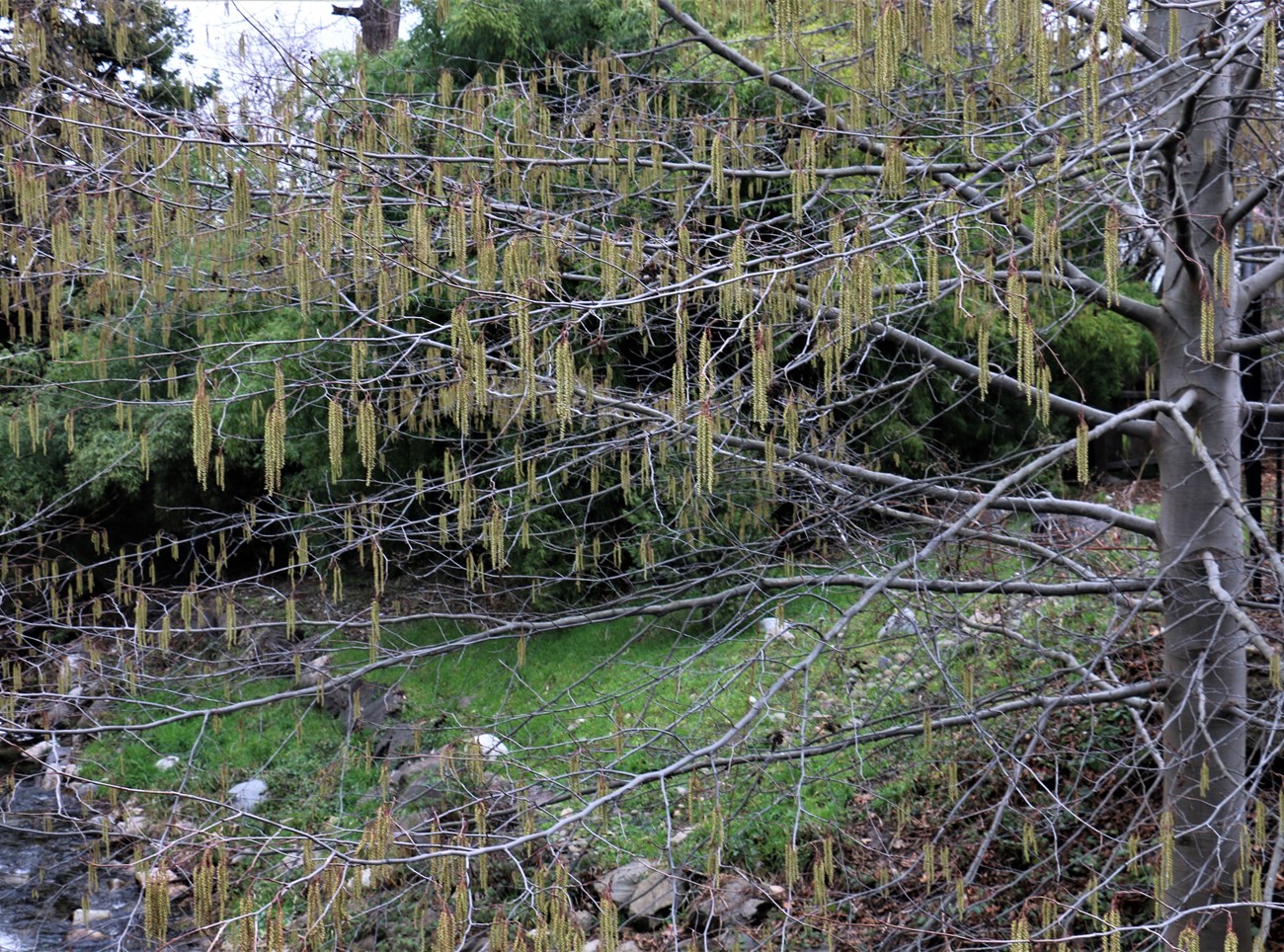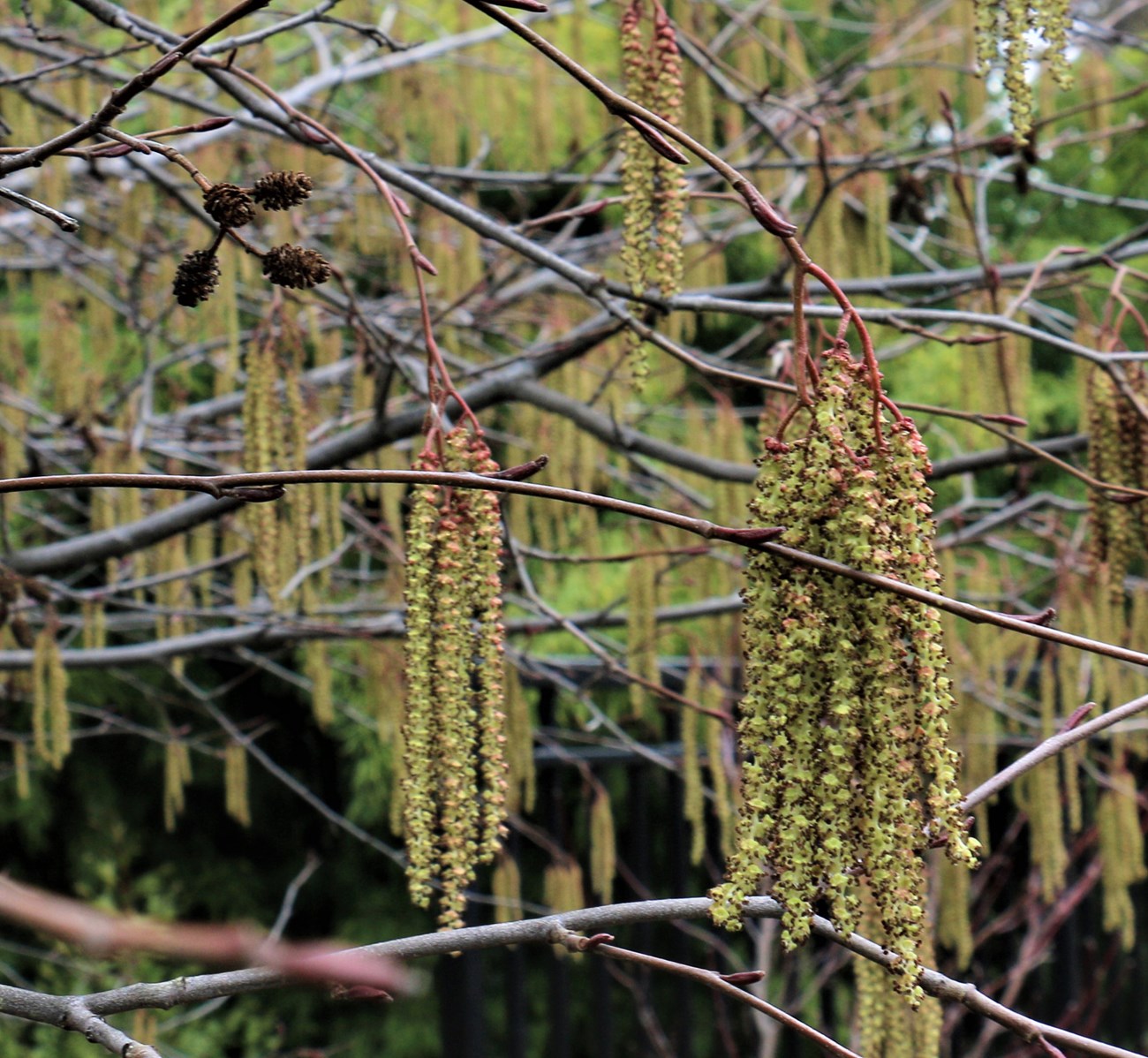Last updated: January 31, 2020
Article
White Alder

NPS photo
General Description
As early as January, when many trees are still dormant, you might find yourself sneezing through a cloud of white alder pollen. Alders are members of the birch family (Betulaceae), and several species of alder grow natively in North America, typically near streams.
The white alder, Alnus rhombifolia, also called the California alder, is an inland tree of the Cascade and Sierra Nevada mountain ranges, closely related to but not often overlapping its more coastal cousin, the red alder (Alnus rubra). It sports dark green, glossy leaves with finely toothed edges that are lighter green underneath. Its light gray bark is smooth when new and increasingly scaly with age, though less scaly and not as dark or reddish as the red alder’s bark. Typically growing to 15 m (50 ft) tall, it is shorter than its red alder cousin, which can reach almost three times as high. Its leaves are also flat at the edges, in contrast to the slightly rolled edges of a red alder. Alders are easily recognized by the woody female fruiting bodies, called strobiles, which are up to 2.2 cm (3/4 in) long and look like small, brown, pinecones upon maturity. Another curious trait is that most alder leaves don’t change color in the fall before dropping.
Habitat and Distribution
White alders grow along streamsides or just adjacent to them on the dryer, rocky slopes above. Occupying a wide elevational range, they occur from just above sea level to almost 2400 m (8000 ft), primarily in California, Oregon, Washington, Idaho, and Montana.

@ Charles Schelz
Reproduction
White alders can reproduce by seed or vegetatively from the roots. For reproduction by seed, both male and female flowers grow on a single white alder tree, making it monoecious (meaning “single house”). The new reproductive cycle actually begins in the summer or fall before the next spring’s bloom, when clusters (catkins) of female flowers begin developing as a small roundish green growth. Yellowish male flower clusters (catkins) form into long (3–10 cm; 1.2–3.9 in) slender, drooping cylinders that don’t release their pollen until early spring (Jan–Apr). Neither flower is showy, since they are wind-pollinated and don’t need to attract insects. A large volume of pollen can be released during this time, before the new spring leaves emerge. Over the spring, summer, and fall, the female flowers mature into the small “cones,” or strobiles, so characteristic of alders, eventually releasing their seeds into the wind or to hungry birds.

@ Charles Schelz
Ecology
White alders, like many riparian plants, feed and shelter much wildlife. Flocks of pine siskins devour their seeds. Mule deer eat their twigs, leaves and buds. Beavers eat their bark and build their dams and lodges with alder wood. Western Tiger Swallowtail butterflies use them as a host plant. The nitrogen-rich leaf litter that drops from an alder into the stream nourishes stream invertebrates, like caddisfly larvae. And cavity nesters, like pileated woodpeckers or red-breasted nuthatches sometimes nest in white alders.
Alders have a handy adaptation not often seen outside of the legume family: they can “fix” the vital plant nutrient, nitrogen. Bacteria in their root nodules move nitrogen from the air into the soil, making it available to the tree and nearby plants. For this reason, alders can more readily colonize disturbed, nitrogen-poor landscapes than other trees that lack this adaptation, and are valuable for restoration projects.
Ethnobotany
Alder tree parts have been used medicinally by Native American tribes, as well as by Chinese and Ayurvedic practitioners. Conditions treated include cancer, diarrhea, consumption, and many more. Alder tree parts were also used as a topical remedy for burns and other skin afflictions. Red alder bark produces a dye used by Native Americans for basketry and clothing.
Where to See
The white alder grows in Whiskeytown NRA, Redwood NSP, and Oregon Caves NMP.
Learn More
https://www.natureofbend.com/blog/2016/10/14/a-little-autumn-tale-about-aldershttps://calscape.org/Alnus-rhombifolia-(White-Alder)
Download a pdf of this article.
Prepared by Sonya Daw
NPS Klamath Inventory & Monitoring Network
Southern Oregon University
1250 Siskiyou Blvd
Ashland, OR 97520
Featured Creature Edition: January 2020
